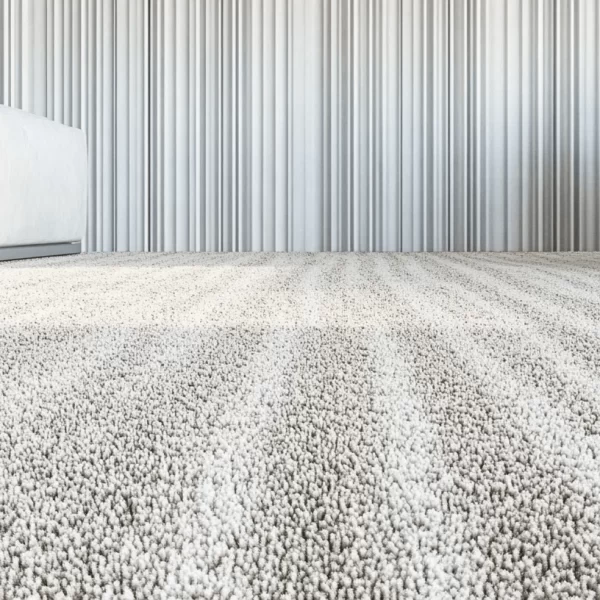
Your Guide to Making Home Offices Accessible for Everyone
October 29, 2024
Breaking Barriers: Stair Alternatives for Multilevel Homes
November 19, 2024Creating a handicap-accessible home isn’t just about making spaces functional; it’s about fostering independence, safety, and comfort for individuals with disabilities. Whether you’re planning a renovation or designing a new home, incorporating key accessibility features ensures that everyone can navigate and enjoy the space with ease, feeling secure and protected. This guide explores the top 10 features every handicap-accessible home should have, offering practical insights to make your home both inclusive and functional.
The Importance of Accessibility in Modern Homes
Accessibility is more than a trend; it’s necessary for millions of people with mobility challenges or disabilities. According to the CDC, 26% of adults in the U.S. live with some form of disability, highlighting the need for homes that accommodate diverse physical needs. An accessible home supports the residents and provides a welcoming environment for visitors with disabilities.
From structural modifications to thoughtful design choices, incorporating accessibility features can transform a home into a safe haven. Let’s delve into the top features that every handicap-accessible home should include.
1. Wide Doorways and Hallways
One of the foundational elements of an accessible home is ensuring that doorways and hallways are wide enough for easy navigation. The Americans with Disabilities Act (ADA) recommends that doorways be at least 32 inches wide and hallways 36 inches wide to accommodate wheelchairs and mobility aids.
Benefits:
- Allows smooth passage for wheelchairs, walkers, and crutches.
- Reduces the risk of injury in tight spaces.
Tips for Implementation:
- Consider pocket doors or barn doors for easier access.
- Ensure door thresholds are flush or have a beveled edge for a seamless transition.
2. Zero-Step Entryways
A step-free entrance is crucial for making a home accessible to wheelchair users and those with mobility impairments. Zero-step entryways eliminate barriers, allowing residents and visitors to enter the house effortlessly.
Features to Include:
- Ramps with a gentle slope (no more than a 1:12 ratio).
- Slip-resistant materials on ramps and entryways.
- Covered entry areas to protect against weather.
Bonus Tip:
- Use landscaping to integrate ramps into the overall design for a seamless look.
3. Accessible Bathrooms
Bathrooms are one of the most important spaces to adapt for accessibility. Minor modifications can make a significant difference in safety and independence.
Key Features:
- Roll-In Showers: Open, curbless showers with non-slip flooring and handheld showerheads.
- Grab Bars: Securely installed grab bars near the toilet, shower, and bathtub.
- ADA-Compliant Toilets: Raised toilet seats and plenty of clearance for wheelchairs.
Additional Considerations:
- Install anti-scald devices on faucets.
- Use contrasting colors for fixtures to aid individuals with visual impairments.
4. Adjustable Kitchen Features
Kitchens are the heart of the home, and accessibility should not be an afterthought. Thoughtfully designed kitchens can empower individuals with disabilities to cook and navigate independently.
Key Upgrades:
- Lowered Countertops: Ensure countertops and work surfaces are at a wheelchair-friendly height (approximately 30-34 inches).
- Pull-Out Shelves: Install pull-out trays in cabinets for easy access to pots, pans, and utensils.
- Accessible Appliances: Use side-opening ovens, refrigerators with pull-out drawers, and touch-control faucets.
Pro Tip:
- Arrange frequently used items within reach to minimize the need for stretching or bending.
5. Lever-Style Door Handles and Faucets
Traditional round knobs can be challenging for individuals with arthritis or limited hand strength. Lever-style handles are a simple and effective solution.
Advantages:
- Easy to operate with minimal effort.
- Can be used with a closed fist or elbow for added convenience.
Implementation:
- Replace door handles, cabinet pulls, and faucet controls throughout the home with lever-style designs.
6. Adequate Lighting and Contrasting Colors
Proper lighting is essential for individuals with low vision or visual impairments. Pairing good lighting with contrasting colors helps define spaces and objects more clearly.
Suggestions:
- Install motion-activated lights in hallways and bathrooms for safety.
- Use contrasting colors for walls, flooring, and furniture to create clear visual boundaries.
Outdoor Lighting:
- Ensure entryways, pathways, and driveways are well-lit with energy-efficient LED lights.
7. Open Floor Plans
Open floor plans reduce barriers and provide ample room for maneuvering mobility aids. Removing unnecessary walls and furniture creates a more accessible and functional living space.
Key Benefits:
- More straightforward navigation for wheelchairs and walkers.
- Improved visibility and communication within the home.
Considerations:
- Place furniture strategically to create clear pathways.
- Avoid area rugs or secure them with anti-slip pads to prevent tripping hazards.
8. Stairlifts or Residential Elevators
For multi-story homes, navigating stairs can be a significant challenge. Stairlifts or residential elevators provide a practical and stylish solution for vertical mobility.
Options:
- Stairlifts: Motorized chairs that travel along a staircase rail, ideal for narrow spaces.
- Residential Elevators: Space-saving and aesthetically pleasing elevators can add long-term value to a home.
Tips:
- Ensure installation meets safety standards and weight limits.
- Battery backup systems are used for uninterrupted operation during power outages.
9. Smart Home Technology
Smart home devices enhance accessibility by allowing users to control their environment with minimal physical effort.
Popular Features:
- Voice-activated assistants (e.g., Alexa, Google Assistant) are used to control lights, thermostats, and entertainment systems.
- Automated window shades and lighting systems.
- Smart locks and video doorbells for enhanced security and convenience.
Advantages:
- Promotes independence for individuals with limited mobility.
- Reduces the need for physical adjustments throughout the day.
10. Accessible Outdoor Spaces
Accessibility shouldn’t stop at the front door. Outdoor areas like patios and gardens should also be designed with inclusivity in mind.
Key Features:
- Smooth, Level Pathways: Use concrete or pavers to create wheelchair-friendly paths.
- Raised Garden Beds: Allow wheelchair users to enjoy gardening without bending.
- Accessible Decks and Patios: Use ramps or level transitions to connect indoor and outdoor spaces seamlessly.
Additional Tips:
- Incorporate shaded seating areas for comfort.
- Install motion-activated outdoor lighting for safety.
Designing Homes for Everyone
Creating a handicap-accessible home isn’t just about meeting ADA guidelines; it’s about fostering independence, dignity, and comfort for everyone who enters the space. From structural modifications like wide doorways and zero-step entryways to thoughtful features like smart home technology and accessible outdoor spaces, these top 10 features can transform any house into a haven of inclusivity.
Whether accommodating a family member, preparing to age in place, or simply aiming to create a more welcoming environment, prioritizing accessibility is a wise investment in functionality and quality of life. By implementing these features, you can ensure your home is a place where everyone feels safe, comfortable, and empowered regardless of ability.
CAPS Remodeling specializes in designing and implementing these essential features, ensuring homes are safe, functional, and empowering for all residents. By considering the top 10 features outlined in this guide, you can create a living space that meets diverse needs and fosters dignity and freedom.

Introducing Jeff Cates, the visionary Founder and Owner of CAPS Remodeling. After experiencing a profound personal event involving his son in 2007, Jeff was inspired to serve a higher purpose: to create safer, more comfortable, and independent living conditions for the elderly and disabled by modifying their current homes. Jeff’s deep-seated religious beliefs form the moral compass that steers CAPS daily operations. Apart from his unwavering dedication to his work, Jeff finds joy in boating and cherishing moments with his family.




